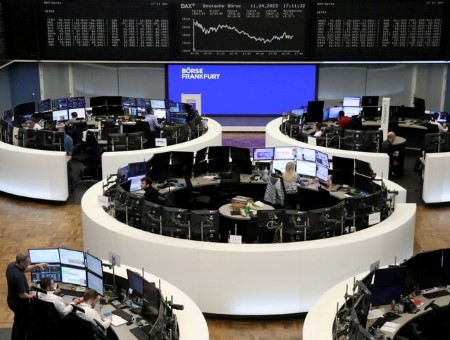April 12 (Reuters) – The dollar index fell roughly 0.6% on Wednesday after March US CPI came in slightly softer than forecast, though losses were kept in check after Fed speakers reminded markets that further tightening is possible if core inflation doesn’t proceed sustainably toward target.
Minutes from the Fed’s March meeting showed concern regarding the banking crisis but also viewed it as contained, leaving inflation the top priority.
Treasury yields and the dollar slipped slightly after the minutes, as some worry the Fed’s 25bp hike was meant to project a business-as-usual message to markets still weighing banking and credit risk.
EUR/USD rose 0.74% as the ECB remains favored to hike rates by at least 75bp into year-end versus the Fed not fully priced to hike 25bp in May before roughly 50bp of cuts by December.
EUR/USD’s rally to 1.1005 on EBS neared February’s 1-year highs at 1.1034 and threatens the first weekly close above the 100-week moving average, now at 1.0949, since October 2021.
If US PPI, claims and retail sales on Thursday and Friday further dim Fed tightening prospects and reinforce 2-year bund-Treasury yield spreads, already at their least negative since November 2021, EUR/USD could move sharply higher.
Sterling rose 0.5%, nearing April’s 1.2525 10-month highs. If upcoming US data favor a more cautious Fed, cable’s bullish medium-term technical outlook and further BoE rate hikes, clearly appropriate with UK inflation still above 10%, could carry prices far higher.
USD/JPY fell 0.42% after recovering some of its initial post-CPI plunge in line with tumbling Treasury yields. Two-year Treasury yields are down 9bp, but 4bp off the day’s lows.
USD/JPY now needs hawkish US data to get a bullish close above the pivotal 133.77 level.
(Editing by Burton Frierson; Randolph Donney is a Reuters market analyst. The views expressed are his own.)







 DOWNLOAD
DOWNLOAD









